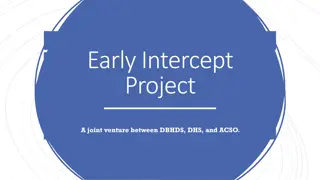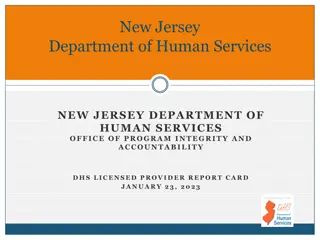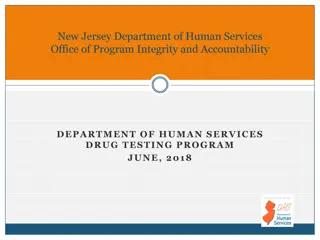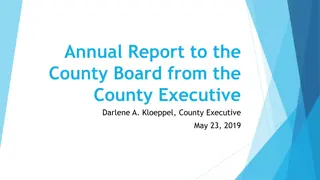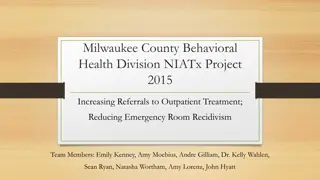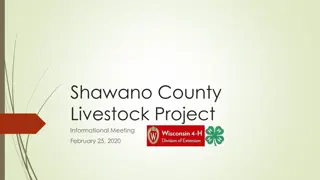Shawano County DHS 2015 NIATX Project Summary
The Shawano County DHS 2015 NIATX Project aimed to decrease the readmission rate among adolescent female consumers by engaging them in a Dialectical Behavior Therapy group. The project focused on teaching specific skills such as mindfulness, crisis survival, emotional regulation, and more. The team identified lessons learned, next steps, and strategies for improving the group therapy sessions. The project emphasized the importance of pre-treatment, community impact, and skill reinforcement in weekly therapy sessions.
Download Presentation

Please find below an Image/Link to download the presentation.
The content on the website is provided AS IS for your information and personal use only. It may not be sold, licensed, or shared on other websites without obtaining consent from the author.If you encounter any issues during the download, it is possible that the publisher has removed the file from their server.
You are allowed to download the files provided on this website for personal or commercial use, subject to the condition that they are used lawfully. All files are the property of their respective owners.
The content on the website is provided AS IS for your information and personal use only. It may not be sold, licensed, or shared on other websites without obtaining consent from the author.
E N D
Presentation Transcript
SHAWANO COUNTY DHS 2015 NIATX PROJECT Executive Sponsor: Kelly Bueschel Change Leader: Jessica Delzer Team Members: Jane Coleman Jennifer Frost
AIM Big AIM: Decrease county readmission rate. Small AIM: Engage 10 adolescent female consumers in a DBT (Dialectical Behavior Therapy) group model, teaching specific skills, to decrease contacts with crisis, law enforcement, and subsequent inpatient hospitalizations. Expected impact: Decrease in readmissions of this population, which has been on the rise since late 2013.
ADOLESCENT DIALECTICAL BEHAVIOR THERAPY GROUP Focused on building new skill each week Co-facilitated by two therapists 16 weeks 1 hour per week Skills include, but not limited to: Mindfulness Crisis Survival Skills Managing Really Difficult Emotions Reality Acceptance Skills Emotional Regulation
SURVEYS AND READMISSION DATA Group Data 69 70 58 60 50 40 35 30 20 10 8 7 6 10 3 3 2 1 0 0 BSL-23 RATING LAW ENFORCEMENT CONTACTS READMISSIONS GROUP MEMBERS Start Mid-point Final
LESSONS LEARNED 1. Importance of pre-treatment: Identifying and solidifying the commitment needed to participate in a 4 month long group. 2. Significance of prior relationships between members and the impact of a small community: More concrete dialogue regarding appropriate group behavior, both in and out of group. 3. Need to reinforce the skills learned in group in weekly therapy sessions. 4. Structure and teaching methods were adjusted/modified as group progressed from the format previously used in the adult DBT group to engage teen members.
NEXT STEPS 1. Train 4 additional staff in Fall 2015 to provide DBT in both individual and group modalities. 2. Structure treatment to more cohesively combine both the group therapy and individual therapy, such that each group member utilizes individual therapy on a weekly or bi-weekly basis to support skills learned in group, and to process through what occurred in group. 3. Better screening/matching of group members with regard to age and peer group. 4. Ensure parent/guardian of each consumer truly understands the group process and skill development.





